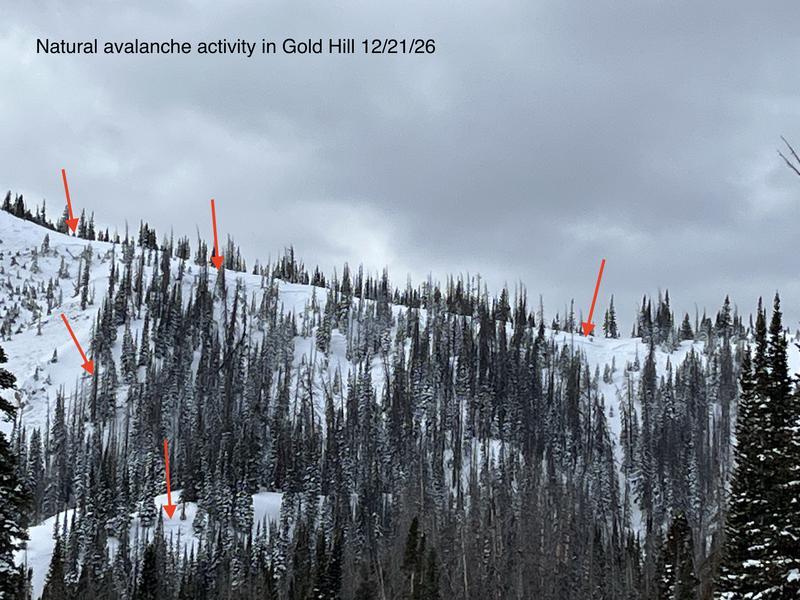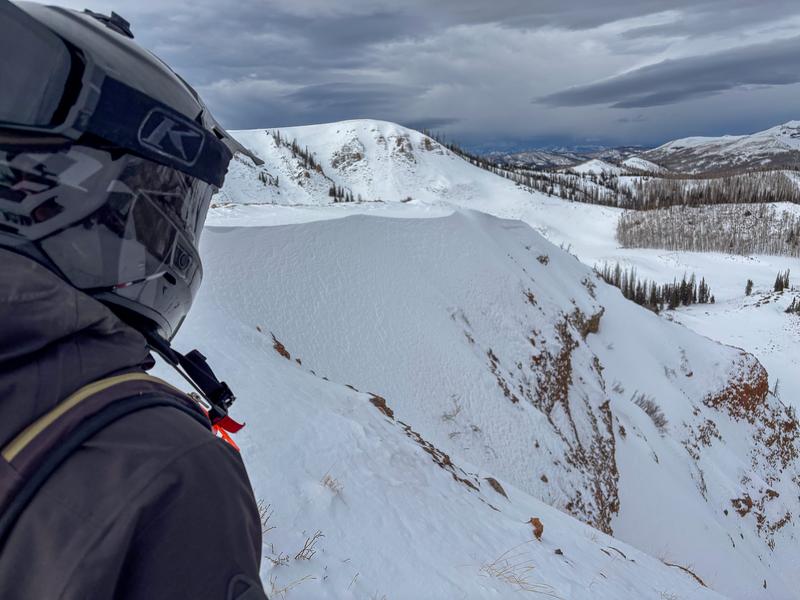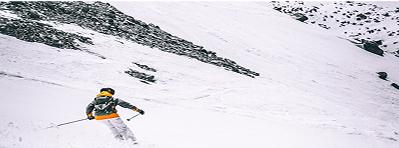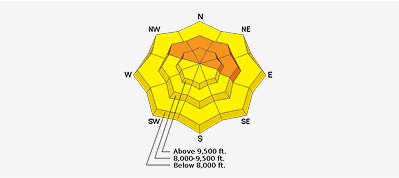Nowcast - 0500 AM brings us mostly cloudy skies accompanied by trailhead temperatures registering tropically in the 40's, dropping down to the low 30's°F at 10,000'. Sustained, strong winds from the southwest average 30 MPH while cranking out 50 MPH gusts along the high ridges and peaks.
Forecast - For today, expect clearing skies and mild temps with a high around 35°F. Winds will continue to blow from the west southwest and average 20 MPH with gusts into the 30's and 40's at higher elevations.
Futurecast - Sunshine will carry us through Tuesday, followed by a mid-week pulse sliding in on Wednesday morning that looks to bring additional mountain snowfall into Christmas.
Travel Conditions - What a change across the range! Below 8,000', most terrain is dry. Above that, overall snow depths range from about 1-4', with deeper totals as you head towards the North Slope. Riding conditions have significantly improved, and although thin, the pack is supportable in many places, and travel off-trail has become possible. Turning conditions continue to be best in protected terrain at upper elevations on slopes that are out of the wind zone and have a grassy past. Vehicle access to Mirror Lake Highway (HW150) and the Corridor has been shut down, while SR-35 (Wolf Creek Pass) remains open.
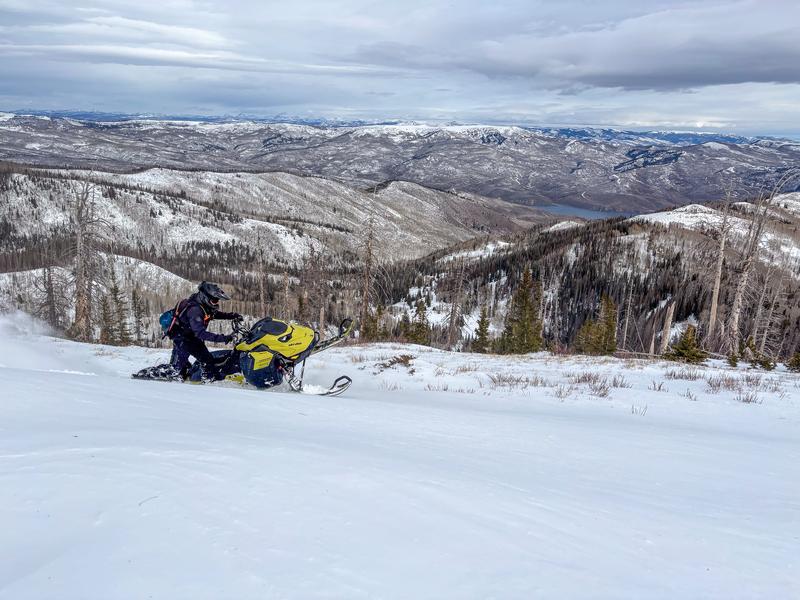
Upper elevation meadows are the ticket right now. Yesterday, our math was simple -- Mellow slope angles + grassy terrain underneath = All four A-arms making it back to the rigs in one piece.

In the windzone, the pack is shallow and weak. Steep, thin, and rocky... three characteristics I am always looking to avoid when traveling above treeline.
Huge thanks to Ted, who was on the North Slope yesterday and noted natural activity from this weekend's avalanche cycle. You can check out more on this slide and from Ted's awesome write-up, here.
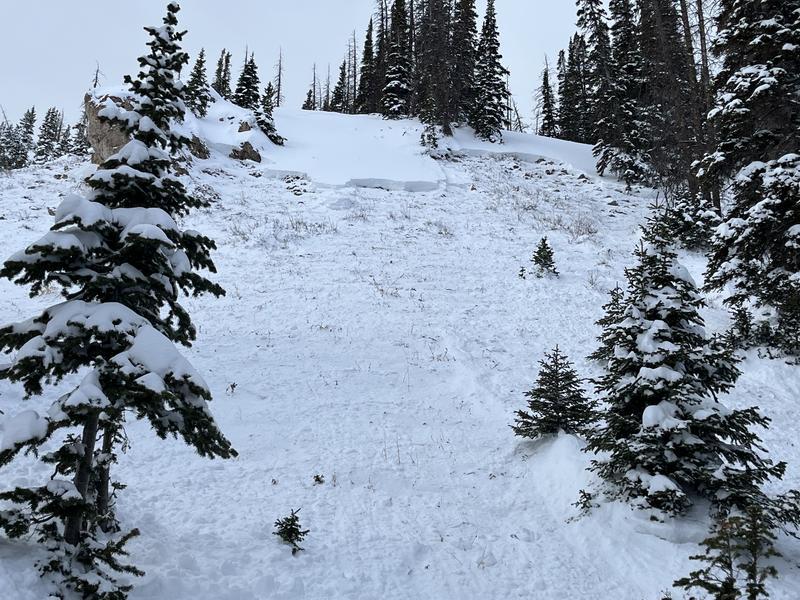
A northeast slope at 10,500' in the Gold Hill area, where a persistent slab avalanche failed naturally 1-2' deep, breaking and wrapping around terrain features a couple of hundred feet along the ridge (via Ted Scroggin).








